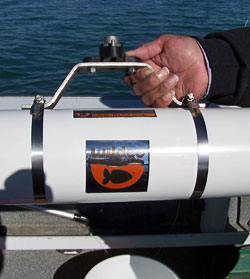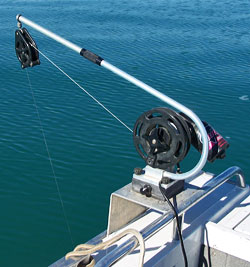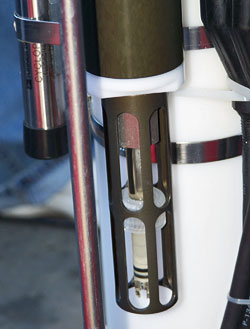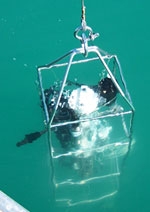Water quality monitoring on Pyramid Lake began in 1985 through the Resource Management Program within the Pyramid Lake Fisheries. In 1989, The Tribe began collaborating with Dr. John Reuter and Dr. Charles Goldman of University of California, Davis, to understand nutrient cycling in Pyramid Lake and develop scientifically sound water quality standards to help protect the beneficial uses of Pyramid Lake. The study included detailed field and laboratory experiments, limnological monitoring and nutrient modeling. Through this research, the Tribe developed sampling procedures that it still uses today.
Water quality monitoring on Pyramid Lake consists of monthly sampling at a deep index station (Station 96 in the deep north basin), as well as quarterly sampling at a shallow index station (Station 93 shallower south basin). Quarterly synoptic samplings are conducted during winter mixing (February), the spring phytoplankton bloom (April-May), summer (August), and in the fall (November). Although, the exact timing may vary from year to year.
Water samples are collected from discrete depths including surface composite (0.5 meters + 2.5 meters + 5 meters), 10, 20, 30, 45, 60, 75, 90 meters and 5 meters from the bottom of the lake. All samples are analyzed for nutrients at the Water Quality Laboratory in Sutcliffe, NV. Analysis includes ammonia as nitrogen, Nitrate+Nitrite , total Kjeldahl nitrogen, dissolved reactive phosphorus and total phosphorous.
Field measurements also collected throughout the water column using a RBR MAestro for temperature, pH, specific conductivity, dissolved oxygen, photosynthetically active radiation and chlorophyll-a. A Secchi Disk is used to determine water transparency and composite zooplankton samples (0-10 meters, and 0 - bottom) are also collected.



